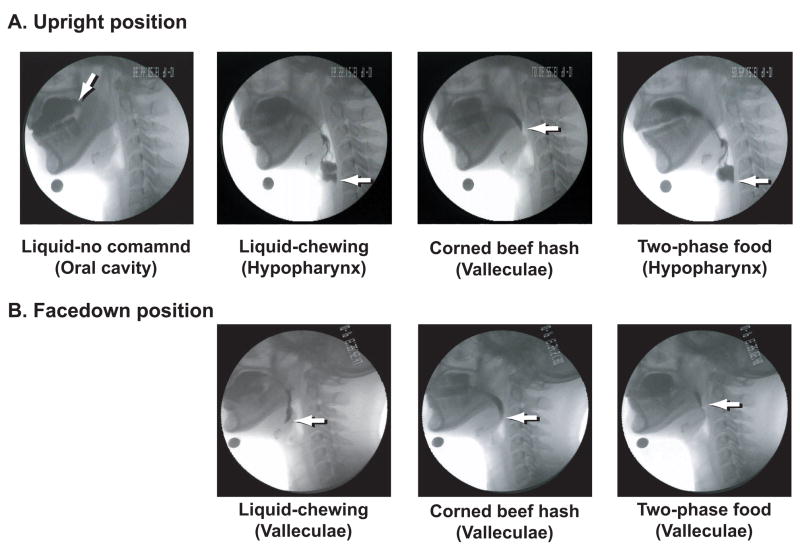Fig. 5.
Example of VFG images showing the oral cavity and pharynx at the moment of swallow initiation with various food consistencies in (A) upright and (B) facedown positions. Images in (B) are rotated counter-clockwise by 90 degrees to simplify comparisons. Arrows point to the leading edge of the barium in each image. (A) In upright position with liquid, the leading edge is normally in the oral cavity at swallow onset without chewing, but moves to the hypopharynx before swallowing when the subject is instructed to chew and then swallow. With a complex two-phase food including both soft solid and liquid phases, the leading edge is in the hypopharynx at swallow onset. (B) With facedown position, for each foods, the leading edge was in the valleculae at swallow onset but did not enter the hypopharynx. This suggests that propulsion to the oropharynx and to the hypopharynx had different mechanisms, the latter dependent on gravity (Source: Saitoh et al., Dysphagia 2007 Apr;22(2):100–7 [3]).

